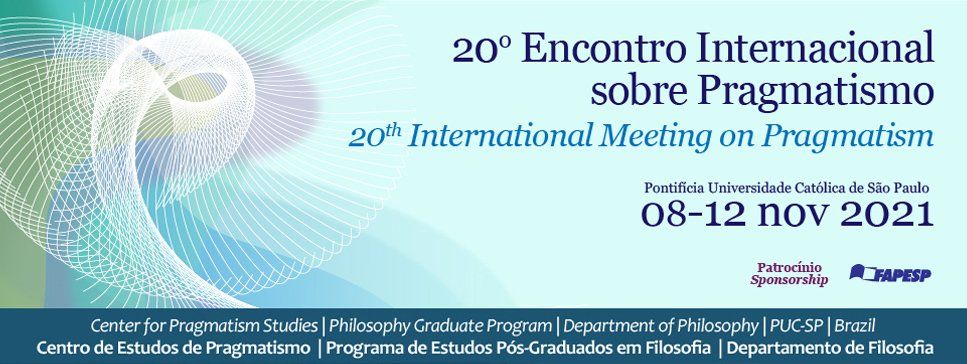LECTURES ABSTRACTS
20th IMP OPENING CONFERENCE
11/8/2021 - Monday
2:30 pm - 4:30 pm | Brasilia time
LINK:
Nythamar de Oliveira | PUC-RS, Brazil
Revisiting Political Pragmatism: Rawls, Dewey, Bernstein
By placing John Dewey between John Rawls and Richard Bernstein, I argue for a socialist reading of Dewey's takes on liberal democracy that moves away both from conservative readings of Dewey of those who claim that his democratic liberalism actually belongs to a right-wing or center views, and from left-wing, communitarians who dismiss such views as irrelevant for socialist and radical variants of liberal democracy. Overall, it can be shown that Rawls and Dewey's different takes on political liberalism could be ultimately reconciled, given their similar takes on democracy, pluralism, and the person. Rawls' rehabilitation of Kant can itself be shown to be closely related to his reading of Dewey. Furthermore, as Bernstein argues, such a renewal of Dewey's social and political philosophy in Rawls's political constructivism and reflective equilibrium was decisive for the great pragmatist turn observed in the second, third, and fourth generations of critical theory, not only in the so-called Frankfurt School (esp. Habermas, Honneth, Forst) but also in feminist and decolonial thinkers such as Nancy Fraser, Seyla Benhabib, Judith Butler, Rahel Jaeggi, and Amy Allen. Dewey's pragmatist turn in political philosophy allows thus for a dynamic, robust correlation between radical democracy and public education, which could be implemented in emerging democracies like Brazil.
CONFERENCE SESSION 2
11/09/2021 - Tuesday
14h - 16h15 | Brasilia time
LINK:
Jaime Nubiola| University of Navarre, Spain
Understanding and Teaching Pragmatism: "By Their Fruits Ye Shall know"
It is not easy to explain what pragmatism is. Everybody who has had to teach pragmatism to university students has found herself or himself in a difficult situation trying to make a clear exposition. Moreover, it was not easy for Charles S. Peirce himself to explain in a simple manner the pragmatic maxim. In this contribution, I will not go into the technicalities of the pragmatic maxim, but I will share the fruits of my reflection of many years about how pragmatism can be more easily understood and taught.
The lecture is arranged in two parts: the first one is dedicated to the old logical rule of the gospel, «By their fruits ye shall know», which appears in two texts of Peirce; and the second one to what I call the "logic of the kitchen", in which I will pay attention also to Peirce's example of the apple pie. I will add a final consideration about how to teach philosophy today, according to Peirce.
André De Tienne | Indiana University Purdue University Indianapolis, USA
Semiotic Metaphysics as Heuristic Exelictics*
The old dualism between epistemology and metaphysics is dead. Their disunion had long led to a succession of connective aporias, at once ingenious and disingenuous. Peirce almost never used the word “epistemology” even though he was one of the first “cognitive scientists” as we label them nowadays. The deep reason was in his early conclusion that cognizability and being were synonymous terms. Whatever is real is researchable and ultimately explainable if the methods in use do not rest only on artificial symbolical scaffoldings. This idea entailed that whatever the real is, it is made in principle of experienceable and intelligible stuff, directly or indirectly. The real is therefore never a “given”; it is rather an active questioning. The real is not only that which determines but also that which urges inquiry. It does not urge belief, though, for belief is not inquiry, nor even the end of inquiry (as aim or terminus). Whether the real is itself inquiry at work is the question.
Over the last three decades, several classes of scientists, including physicists and biologists, have grown sufficiently aware of semiotics, whether in the European or the American traditions, to recognize that embedded in such theories were logics that appeared to be applicable in their own disciplines. This was especially evident in scientists who made a turn toward Peirce’s semiotic logic, not only because Peirce was himself a scientist, a mathematician, and a logician (unlike European brethren), but because his work made especially good sense of the logic of scientific research. Peirce’s theories about the three classes of inferences of abduction, deduction, and induction had the crucial advantage of illuminating and correcting the very methods in use in the sciences—and for a long time that was the major recognition. But little by little grew a complementary awareness, the awareness that objects targeted by inquiry turned out to be highly sensitive to inquiry. That became particularly prominent in quantum mechanics. Sensitivity to inquiry meant several things, though: that which is inquired into may be modified by that inquiry; it may also modify that inquiry; and, especially, it may behave itself according to the formal processes of inquiry, either on its own, or collectively, or throughout its own evolutive history.
Some contemporary biosemioticians have been wondering whether evolutionary processes might be better understood in terms of problem-solving processes than of Darwinian processes. Others have long taken it for granted that what distinguishes life from non-life is semiosis. At the same time, the traditional duality between life and non-life has grown blurrier and blurrier: the closer one comes to the root of the distinction, the hazier it becomes. There are very solid reasons to claim that Peirce thought that semiosis anteceded life as traditionally understood. He had an argument about the origin of the universe that was logical and semiotic through and through. Some scientists have theorized that the second law of thermodynamics is fundamental to a proper understanding of semiosis in Peircean terms. Others have insisted on a close connection between tychastic, anancastic, and even agapastic processes of evolution as applied to semiosis and processes of formation of fractal attractors in chaos theory. More recently there has been a growing and most serious literature on quantum semiotics. Given that the definition of a sign relation is identical to the general definition of inquiry, there is therefore a need to delve into the metaphysics of inquiry and to prod its linkage to the metaphysics of evolution. This paper aims to investigate the connection between inferential and semiosic processes of inquiry and processes of evolution in a Peircean spirit.
*Neologism coined according to Peirce’s ethics of terminology and meaning the science of evolution, from modern Greek εξέλιξη, “evolution.”
CONFERENCE SESSION 3
11/10/2021 - Wednesday
14h - 16h15 | Brasilia time
LINK:
Michael L. Raposa | Lehigh University, USA
Further Reflections on Peirce's Scotism
Most of the scholarly literature devoted to a comparative analysis of the thought of Charles Peirce and Duns Scotus has focused on Peirce’s endorsement of an “extreme” scholastic realism linked explicitly to Scotus’s medieval deliberations. Indeed, my own early studies of Peirce focused on his sharp critique of nominalism and defense of a robust metaphysical realism. More recently, however, my attention has shifted to other possible points of contact between these two thinkers, for example, linking the pragmaticism defended in Peirce’s Neglected Argument for the reality of God with Scotus’s portrayal of theology as a practical science, or understanding Peirce’s account of semiosis within the framework supplied by Scotus’s conception of essentially ordered causes. In this paper, I propose to review all of these connections between Peirce and Scotus, while also suggesting further possibilities. My goal is not so much to demonstrate the tangible influence of Scotus on Peirce in every case, as it is to illustrate how Peirce’s thought resonates with that of his distinguished medieval predecessor. Consequently, I am less concerned with a direct comparison of Peirce and Scotus than I am with the assessment of Peirce’s Scotism, his creative modern reformulation of basic strands of thought that are woven into the fabric of Scotus’s philosophy and theology.
Vincent Colapietro | University of Rhode Island, USA
Rhetoric Revisited
One of the most fruitful ways to approach an author, especially a philosophical writer, is to attend carefully to the unresolved tensions in their literary corpus, comprehensively conceived. Such a corpus includes the writer’s letters, notebooks, diaries, and other “private” miscellanea as well as that individual’s published texts and unpublished drafts. Rarely are such tensions simply contradictions in any narrow sense; rather they are often best interpreted as indications of the irreducibly complex purposes animating a thinker’s work. The Peircean concept of developmental teleology only adds to this complexity. In the case of C. S. Peirce, the tension between, say, security and uberity (or fecundity) illustrates my point. So, too, does that between the encompassing vision of speculative rhetoric sketched in “Ideas, Stray or Stolen, about Scientific Writing” (1904) and Peirce’s seemingly narrower conception of methodeutic. On this occasion, then, I want to argue for a specific approach to philosophical interpretation in which unresolved tensions are of unsurpassed importance. And I want to do so specifically in reference to the third branch of Peirce’s semeiotic, variously identified as speculative rhetoric, general rhetoric, methodeutic, and otherwise. However named, this is in Peirce’s judgment “the highest and liveliest branch of logic,” for it is the arena of inquiry in which the life of signs is most manifest. My hope is, at one level, to illuminate the innermost character of Peirce’s philosophical project and, at another one, to make a case for a distinctive hermeneutic approach to philosophical texts. In the course of doing so, questions regarding the rhetoric of philosophy, especially in relation to the rhetoric of science, must be raised and, to the extent this is possible within the limits of such a paper, addressed. In particular, Peirce’s avowed efforts to model philosophical rhetoric on scientific rhetoric needs to be read in light of his actual practices as a philosophical author. What is difficult, if not impossible, for an author to discern can become evident to those readers in whose psyches that author’s words take root and grow. Peirce in fact insists, “it is much more true to say that the thoughts of a living writer are in any printed copy of his book than that they are in his brain” (Collected Papers, 7.364). It is even truer to say that the author’s ideas are in the reader’s interpretation of those ideas than that they are in the static tokens comprising the printed text. A nuanced understanding of human purposiveness however is required to make sense out of how authors can be at cross-purposes with themselves and how their purposes can be conjoined with those of their readers. Here as in other contexts, we observe he self which is divided against itself and, at the same time, allied to others. An approach to texts attuned to these important facets of human agency promises to be more fruitful than one fixated on formal consistency and singular genius. Identifying unresolved tensions and unacknowledged solidarities ought to be focal concerns for the responsible interpreter. In light of a Peircean understanding of development teleology, nothing is more important than the irreducible complexity of an author’s evolving purposes, including tensions or conflicts between these purposes. This requires us to revisit Peirce’s rhetoric, as he formally envisioned it but also as he actually used words to realize his complex objectives. The work of a finite, fallible self, in the role of author no less than in other endeavors, is in part that of self-clarification, a process of coming to understand more clearly the purposes animating one’s endeavors and their relationship to one another. Paradoxically, readers assist an author in this process, even when the author is no longer living. Indeed, the life of a historically significant writer such as C. S. Peirce is most evident in how that author’s words are taken up and carried forward by various interpretive communities.
CONFERENCE SESSION 4
11/11/2021 - Thursday
14h - 15h | Brasilia time
LINK:
Roberto Pich |PUC-RS, Brazil
Common Sense Philosophy and Knowledge: Revisiting Thomas Reid' Rejection of Skepticism and Its Reception in the History of Philosophy
The epistemology of Thomas Reid (1710-1796) is clearly based on an idea of “common sense” or, lato sensu, of human rationality. This very notion conditions his theory of evidence, his theory of principles of knowledge, his epistemic fallibilism, as well as his singular answer to the radical skpetic with regard to the problem of knowledge of the external world. With Reid, we see the beginning of a new strategy to answering epistemic skepticism, namely a strategy that appeals to the incorrigible insufficiency of reasoanability in the skeptical doubt. After explaining the center of that strategy, we point to the ways how, explicitly or surreptitioulsy, Reid’s common sense epistemology survives in modern and contemporary epistemologies that, in the end, also accuse skepticism of the same insufficiency. In that case, we attempt to show elements of Reid’s epistemology in Charles Sanders Peirce (1839-1914), Ludwig Wittgenstein (1889-1951), Peter Frederick Strawson (1919-2006) and Alvin Plantinga (1932-). At the exposition core there is a common thesis to be demonstrated: that the weakness of skepticism does not consist in showing that there are ways to falsifying its hypotheses, but rather in showing how the skeptical attitude is unreasonable or inconsistent, after all.




